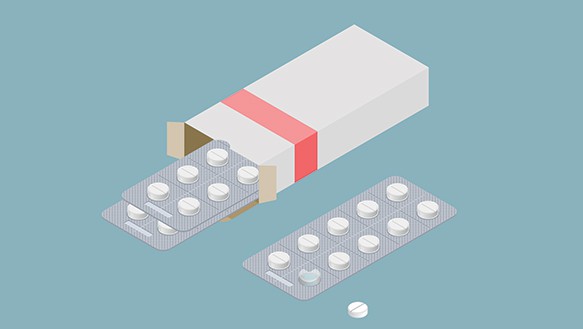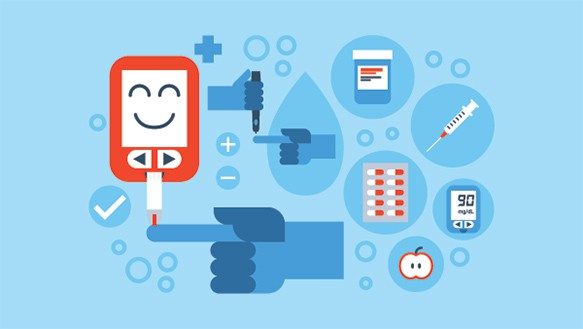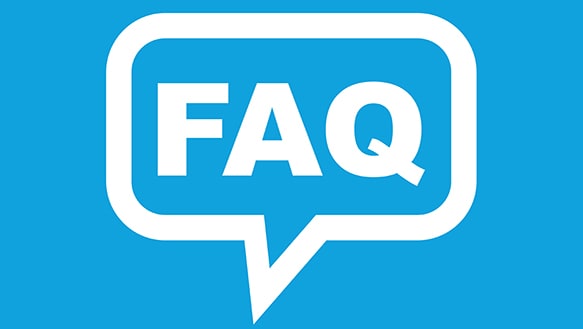
In October of 2006, the Merck drug company introduced Sitagliptin, brand name Januvia. This was the first of the medications to be FDA approved in the United States in a new class of drugs called Dipeptidyl Peptidase-4, or more commonly, DPP-4.
Choices for treatment of Type 2 Diabetes treat high blood sugar, but none of them effect the beta cell regeneration or functioning. Before 2006, we had several oral agents (pills) for the treatment of Type 2 Diabetes, including the biguanides, with the most popular being Metformin.
There are also Sulfonylureas, examples including glipizide, or Glucotrol. The Meglitinides include Prandin, Alpha-Glucosidase Inhibitors include medications such as Glyset and Precose.
The TZD class (Thiazolidinediones) includes Actos and Avandia. Some of these medications come with risk of low blood sugar, and some others have significant adverse side effects. Others carry with them minor, annoying side effects.
The previous classes of diabetes medications treat Type 2 Diabetes by treating high blood sugar, suppressing blood sugar output from the liver, and stimulating insulin to be released from the beta cells. This helps with the absorption of blood sugar, and increases the uptake of blood sugar all over the body.
The DPP-4 class of medications hits a new target with relation to the treatment of Type 2 Diabetes. These medications can also be combined with other diabetes medications to achieve optimal control of blood sugar.
Contents
Eva’s story
Eva’s doctor was concerned. She was young when he diagnosed her with Type 2 Diabetes at age 52. She had been to diabetes education classes. She was losing some weight, and eating healthier. She had started an activity program. However, her A1C was still at 7.5%. Eva’s doctor wanted to get it down below 7%.
Things weren’t quite at a point to warrant insulin use, and Eva’s doctor suggested that she try a new DPP-4 Inhibitor, combined with her Metformin and Glipizide. He cautioned her about the increased possibility that she may have a low blood sugar with the new add-on medication. The doctor decided to get her on Janumet, a combination of Metformin and Sitagliptin.
This way, with the combined medication, Eva only needed to take one pill instead of the two medications. Her doctor kept her on the Glipizide, but asked her to call if she experienced episodes of low blood sugar, and they would re-evaluate her in one month. When Eva went back for her one-month check-up, it wasn’t time for a new A1C, but she reported blood sugars in the range that would predict an A1C of about 6.5.
Eva carried her glucose tablets with her everywhere. She did begin to have some low blood sugars, and notified her doctor’s office. The glipizide dosage was lowered. So far, Eva has continued taking Janumet, and her A1C is still under 7%. It seems that a DPP-4 Inhibitor was a good choice for Eva. Could it be a good choice for you? Let’s find out.
For more informative articles read the following:
What is a DPP-4 Inhibitor?
DPP-4 inhibitors work on the incretin hormone, GLP-1, in the gut. Incretin means intestinal secretion of insulin. The GLP-1 hormone is reduced in those with Type 2 Diabetes, and this new class of drugs targets GLP-1 specifically to slow the process of inactivation of the hormone, and to slow its degradation in the gut. GLP-1, as a hormone, has a short half-life of about two minutes.
GLP-1, produced in the small intestine, gets secreted in relation to the release of nutrients from the food we eat during digestion. GLP-1 tells the pancreas to make more insulin and release it from pancreatic islet or beta cells. DPP-4s also do just what their name says they do.
They inhibit the enzyme DPP-4, or Dipeptidyl Peptidase-4, which is helpful for those with Type 2 Diabetes because it attaches to the surface of the cells, and deactivates bioactive peptides. Besides GLP-1, it affects glucose-dependent insulinotropic polypeptide (GIP), another peptide. Therefore, it can influence blood glucose.
Who can take DPP-4s?
Indication of DPP-4s are for Type 2 Diabetics only. These medications should never be used for the treatment of Type 1 Diabetes. People with a history of diabetic ketoacidosis should not use DPP-4s. The use of Saxagliptin had not been studied in combination with insulin, but the use of Sitagliptin has been studied. Sitagliptin, in combination with Sulfonylureas and Insulin, have an increased risk for low blood sugar.
DPP-4s for Type 2 Diabetes are rarely used as the first line medication. Patients begin with a healthy diet, activity program, and metformin is often the first drug that is prescribed if the patient can take it. If the patient has intolerance, due to gastrointestinal upset related to Metformin, and this is not remedied by switching to the extended release version, or if the patient has any other contraindications to Metformin, they may be started on a DPP-4 initially.
Most often, a Sulfonylurea, or a TZD will be prescribed prior to a DPP-4 inhibiter, but the provider may decide to prescribe it if there are contraindications to those medications. They do have a small amount of blood sugar lowering ability when compared with some other medications for Type 2 Diabetes that may be more effective.
It's allowed to give people with renal insufficiency (RI) DPP-4s, but the dose must be adjusted because there is an increased risk of a low blood sugar with renal insufficiency. If a person with RI is given DPP-4s, their healthcare provider should be carefully monitoring their renal function, as well as their blood sugars for any hypoglycemia.
Who can’t take DPP-4s?
People who have Type 1 Diabetes, or ketoacidosis can’t take DPP4s. People who have had an allergic or anaphylactic reaction to DPP-4s, or any of the ingredients, should not take DPP-4s. People who have a history of pancreatitis, or who are suspected of having pancreatitis should not take DPP-4s. Due to a tendency for the medication to cause angioedema, and Stevens-Johnson Syndrome, it must be used with extreme caution in those patients who have at one time had pancreatitis.
For suspected pancreatitis while taking the medication, it should be immediately discontinued. The studies have only shown that Sitagliptin can cause pancreatitis, and there have been rare cases where patients have died of pancreatitis while taking DPP-4 Inhibitors. Saxagliptin has not been studied related to this, but should also be used with extreme caution in pancreatitis, due to it being from the same class of drugs.
How do DPP-4s work?
Levels of GLP-1 are low upon awakening in the fasting state. After a meal is consumed, levels of GLP-1 are rapidly increased in the gut and intestines.
DPP-4’s target GLP-1, which results in:
- Lower blood sugars post-meal
- Decreased blood sugar being kicked out into the bloodstream by the liver
- Increased insulin secretion
- Delayed emptying of gastric contents
- A feeling of fullness, or satiety
- Increases proliferation of beta cells in the pancreas
- Slows the death of beta cells1
How do DPP-4s work to lower blood sugar levels?
Incretin hormone is a natural hormone. Your body manufactures it, and it lets your beta cells know when to release insulin after a meal. Insulin, in turn, when released, lowers your blood sugar. This is the mechanism of action by which DPP-4 lowers your blood sugar. The pill DPP-4 is made to replace a natural enzyme in your body called dipeptidyl peptidase-4. This enzyme is deficient in Type 2 Diabetes. Stopping the DPP-4 helps the incretin stay in your system longer. This causes the insulin to be released, lowering blood sugar.
How effective is it?
There have been studies that look at the efficacy of DPP-4 medications Sitagliptin and Saxagliptin for the treatment of Type 2 Diabetes. The studies have looked at DPP-4s alone, and in combination with other medications. Generally, with DPP-4s, you get an A1C reduction of about 0.6% to 0.9%. There is not a risk for low blood sugar when taken alone.
That’s not a great deal of A1C lowering effect, but when combined with other medications, DPP-4s can enhance diabetes management, and give extra blood sugar lowering and A1C reduction that may be needed.
Other names for DPP-4 Inhibitors
DPP-4s are also known as Gliptins, and Selective Dipeptidyl Peptidase-4 Inhibitors. They come in a variety of name brand and combination products. There are four generic names of medications available with FDA approval in the United States. Below is a list of the medications that contain DPP-4, including all the combination drugs out there.
Types – DPP-4 only
Here are different types available:
United States
- Sitagliptin (Junuvia)
- Saxagliptin (Onglyza)
- Linagliptin (Tradjenta)
- Alogliptin (Nesina)
Europe
- Vildagliptin (Galvus)
There are a few other versions of DPP-4s that are marketed in South Korea, and Japan. We won’t get into what those here.
Types – DPP-4 combination medications (US)
- Sitagliptin and Metformin (Janumet)
- Linagliptin and Metformin (Jentadueto)
- Alogliptin and Metformin (Kazano)
- Saxagliptin and Metformin (Komboglyze)
- Alogliptin and Pioglitazone (Oseni)
- Sitagliptin and Simvastatin (Juvisync)
Is DPP-4 found in nature?
DPP-4 medications for Type 2 Diabetes come in pill form, either alone or in combination. There are a large variety of natural plant and herbal sources of DPP-4 Inhibitors, and scientists can extract active DPP-4 from herbal and plant sources. These may serve as a wave of next generation DPP-4 drugs for Type 2 Diabetes.2
Do I need a prescription to be able to buy it, and where do I find it?
Yes, you need a prescription to buy DPP-4 medications, and combination medications that contain DPP-4 Inhibitors. They are only available at your pharmacy, and are not currently available as over-the-counter medications.
How much do DPP-4s cost?
The reason that DPP-4s are not quite as popular as some other medications for Type 2 Diabetes, is because they cost so much. At about $200 and up to almost $900 for a month’s supply, they are expensive when compared with some of the other pills for Type 2 Diabetes.
Usually, a person’s insurance will cover these only if you have failed on other, less expensive medications for Type 2 Diabetes. There may be then some paperwork that your doctor or healthcare provider must complete in order to get this costly medication approved.
Since they don’t decrease A1C by all that much, they may not be considered the best value for the money. When you can get Metformin or Glipizide for a few dollars a month, it may not be cost effective to start on DPP-4 therapy.
Do I need to speak to my doctor before starting to take it?
Your doctor, or medical provider is the only one who can give you a prescription for your medication. Talk with him or her about the benefits, side effects, and any adverse events you might experience while taking this medication, and whether this medication is right for you. You may also want to discuss with your pharmacist about any drug interactions that may occur with other medications that you are taking for your diabetes, or for other conditions.
How and when do I take DPP4 medications?
Once your doctor gives you your prescription, and directions for taking your medication, the label on the medication bottle from your pharmacy will also list the name of the medication, the dosage, how often you should take it, and any precautions related to the medication.
How long do I need to take DPP-4 medication?
Take DPP-4 medications as directed, for as long as your doctor tells you to. Make sure to communicate any side effects that bother you. Don’t stop your medications on your own.
Do DPP-4 Inhibitors need to be taken at the same time every day?
Yes, you will take your medication at the same time each day. Most DPP-4s are once daily, but some combination medications are given twice daily. Speak with your doctor about the best time of day to take your medication, if you are unsure. Most people take their DPP-4 in the morning, with their breakfast.
Can I take DPP-4s at the same time as other medications?
You can have your pharmacist check for drug-to-drug interactions. There are many medications that can interact with DPP4s. If there are no medication interactions to be concerned about, then it is safe to take DPP-4s with your other medications. With sitagliptin, there is a limit to the amount that is metabolized in the liver. Therefore, significant drug-to-drug interactions are not expected with this medication.
Saxagliptin has a different metabolism, which involves the action of CYP 450 isoenzymes 3A⅘. It still doesn’t have any negative drug interactions when combined with other medications for Type 2 Diabetes, but it will interact with ketoconazole, which is an inhibitor of this enzyme. This affect has been seen with the medication Diltiazem for heart disease. It’s all a little complicated, so it is best to just talk with your pharmacist.
Some supplements to avoid are herbal dietary supplements such as Berberine, which will stop DPP-4 functioning, and can also lower blood sugar. A nutrient found in mango, Lupeol, and herb called “red alder,” and another called, “dandelion coffee,” should all be avoided while taking DPP-4s.
Recommended adult dosage of DPP-4s
- Sitagliptin (Januvia)– 25 mg, 50 mg, and 100 mg tablets once daily, with or without food
- Saxagliptin (Onglyza)– 2.5 mg, 5 mg tablets once daily, with or without food
- Linagliptin (Trajenta) – 5 mg tablet once daily, with or without food
- Sitagliptin/Metformin (Janumet)– 50mg/500mg, or 50 mg/1,000 mg tablet twice daily, at mealtime
- Saxagliptin/Metformin XR (Kombiglyze)– 2.5 mg/1,000 mg, 5 mg/1,000 mg, or 5 mg/2,000 mg tablet once daily, with evening meal
- Alogliptin (Nesina)– 25 mg tablet once daily
Recommended dosage for renal patients to avoid low blood sugar
- Sitagliptin - for kidney/renal patients, dosage is lowered if the Glomerular Filtration Rate (GFR) is less than 50 mL/min. When GFR is 30-50 mL/min, the dose shouldn’t exceed 50 mg daily. When GFR is less than 30 mL/min, the maximum dose is 25 mg. If a person with diabetes taking DPP-4 inhibitors is on dialysis, either hemodialysis or peritoneal dialysis, dose shouldn’t exceed 25 mg a day.
- Saxagliptin - if GFR is less than 50 mL/min, don’t exceed 2.5 mg once a day. For dialysis patients, give 2.5 mg once daily after dialysis.
- Linagliptin - there is no dosage adjustment for linagliptin related to renal/kidney patients.
- Alogliptin - for GFR 30 mL/min – 60 mL/min, dose should be 12.5 mg once a day. If the GFR is 15 mL/min – 30 mL/min, maximum dosage is 6.25 mg once a day. If GFR is less than 15 mL/min, or if creatinine is greater than 1.4 mg/dl in women, or over 1.5 mg/dl in men.
- Janumet is contraindicated with a GFR less than 60 mL/min, or if serum creatinine is elevated. Sitagliptin requires no adjustment for renal impairment in the mild to moderate range.
Benefits
Though they have a very minor effect on A1C levels, DPP-4 Inhibitors, when combined with other medications, can enhance diabetes self-management. They may give extra blood sugar lowering and A1C lowering ability that is needed. In this way, they may be beneficial for people with Type 2 Diabetes. Blocking hunger pangs, and helping beta cells to rejuvenate or “wake up,” is also one benefit that is an add-on, that none of the other classes of diabetes medications can do.
Side effects of DPP-4 Inhibitors
DPP-4s don’t cause a low blood sugar by themselves, but when Sitagliptin and Saxogliptin are combined with other medications, such as sulfonylureas or insulin, they have been associated with increased incidence of low blood sugar. They don’t cause a raise in blood lipids, and we really don’t know yet if DPP-4s will reduce the cardiovascular and macrovascular complications of diabetes, because no studies have been done to assess this.
If you experience side effects from DPP-4 Inhibitors, weigh the benefit of the medication against any minor side effects. Do you feel that you get enough benefit from the medication to deal with unpleasant side effects? It could be that after you have taken then medication for a month or two, the side effects may dissipate.
If the side effects bother you, you should talk them over with your doctor or pharmacist. It could be that lowering the dose of medicine would get rid of the unpleasant side effects. Your medications come with information that lists the side effects. Whatever you do, don’t suddenly stop your medications due to side effects before you have a conversation with your doctor.
The most serious reaction to any medication that can occur is an anaphylactic reaction. Signs of an allergic reaction to DPP-4s can start with itching and a rash. If you notice that you are having any of the following symptoms, you should call 911:
- Difficulty breathing
- Swelling in the face, tongue, lips or throat
- Hives
Common side effects of this medicine include:
- Runny nose
- stuffy sinuses
- sore throat
- other signs of Upper Respiratory Infections (URI)
- burning on urination
- blood in the urine
- fever
- Urinary Tract Infection (UTI)
- Infections elsewhere (any other type)
- Headaches
- Nausea
- Stomach pain
- Diarrhea
- Painful skin, followed by rash that is purple in color
Other precautions for DPP-4s
If you have any problems with your kidneys, your doctor may give you a lower dose of DPP-4 medication. This class of drugs has also been linked to problems with an increased risk for the development of pancreatitis.
Pain in the upper part of your stomach, nausea and vomiting may indicate pancreatitis. People with a history of pancreatitis should not take DPP-4s, or should take them only with caution. Researchers found no evidence of increased risk for pancreatic cancer, but risk couldn’t be excluded due to the small size of the sample study.
A study in 2014 found that there were no effects on mortality, heart-related deaths, or strokes, when taking DPP-4 Inhibitors, but there was a slight increase in the number of patients that experienced heart failure while taking DPP-4s (Saxagliptin, Alogliptin). Patients may also experience severe pain in joints when taking this medication.3
Further reading:
FAQs
How do I get rid of the side effects from DPP-4 medications?
Likely, the side effects from DPP-4 medications, if minor, may go away on their own after some time. Taking DPP4’s with meals may help you not to have the stomach issues that are common.
How common are the side effects?
The common side effects are just that. They occur often, so if they are on the common side effects list, then you may experience them. However, everyone is different, and you may have no side effects at all.
Does DPP-4 Inhibitors help you to lose weight?
DPP-4s is not going to cause you to gain any weight, or lose any weight by themselves. However, they can cause you to have a decreased appetite. This satiety, if you pay attention to what your brain is telling you about how full you feel, can help you to lose weight while taking DPP-4s. Weight loss has been moderate in studies, with 1.5 kg lost in 52 weeks, and 1.8 kg lost in 24 weeks.
How do I know that DPP-4 Inhibitors are working?
You will know that your DPP-4 Inhibitor is working when you see that your A1C and blood sugar have had a modest drop. This should be your doctor’s objective when placing you on this medication. He or she will be trying to get that extra boost.
Do I need to watch my diet and eating habits while on DPP-4 Inhibitors?
Yes, your diabetes medications work together, to give you assistance with blood sugars, but you must stick to your nutritional and activity plans to get the most benefit from your diabetes medications.
Are there other alternates for DPP-4 Inhibitors?
Yes, there are many classes of diabetes medications available. Many times, another drug may be the drug of choice for you instead of a DPP-4. You and your doctor can decide together what medications are best for you.
Can I take DPP-4 Inhibitors while I am pregnant? What about if I am breastfeeding?
Make sure you tell your doctor if you are planning to get pregnant, if you are pregnant, or if you are breastfeeding. DPP-4s are in FDA Pregnancy Category B, which means that they can’t rule out risk during pregnancy. It means that there have been animal studies that have shown problems with the fetus, but no human studies have been conducted on this. Sometimes, benefits warrant risks. This must be carefully weighed by each mother, and her physician.
For breastfeeding, they have not been able to rule out problems, so the medication should be used with caution in breastfeeding women.
How do I know that DPP-4 Inhibitor medications are the best for me?
To know if DPP-4 medications are the best for you, you should talk it over with your provider. If he or she thinks that the medication may benefit you, you should try it a trial basis and see how it works for you. It could be that you get to your goal by adding this medication, as in Eva’s case. If you have untoward side effects, and you don’t get any blood sugar or A1C reduction, then it’s safe to say it’s not for you.
If you are on dialysis, have moderate renal failure or insufficiency, this medication may help you. Speak with your healthcare provider about the benefits of these, and other medications for your diabetes
Do these pills also help in the overall health of cardiovascular muscles?
There really hasn’t been any evidence that DPP-4s provide heart protective benefits. More studies need to be done in this area.
What is the difference between DPP-4 inhibitors, and GLP-1 Receptor Agonists?
GLP-1 receptor agonists are going to give you an increased A1C reduction than you will get with DPP-4 Inhibitors. GLP-1 receptor agonists are an injection, and not a pill. Some people may rather take a pill, but GLP-1 injections may give better control over diabetes, and also help a person with Type 2 Diabetes lose more weight.
In conclusion
Even though the DPP-4 Inhibitors are approved to use with a healthy diet, activity level, and other medications for Type 2 Diabetes, the data that we have so far points to Metformin and Sulfonylureas as the first medications to try. They will lower blood sugar and A1C more than DPP-4 Inhibitors.
DPP-4 inhibitors may be a good option when a patient has reached maximum benefits with the other medications they are taking, and they need a little extra A1C lowering and blood sugar lowering boost. Your healthcare provider may want to see if they can get you a bit closer to your A1C goal.
We can conclude that these medications are best used in combination with other Type 2 Diabetes medications for maximum benefit. (3-10)
Have you tried DPP-4 Inhibitor medications for your diabetes? How did they work out when combined with your other medications? Do you think they are worth the high cost? Sharing your insights or experience may help someone else benefit and make smarter decisions. Please comment in the box below as we love to hear from you.
TheDiabetesCouncil Article | Reviewed by Dr. Jerry Ramos MD on May 21, 2020
References
- https://www.uptodate.com/contents/glucagon-like-peptide-1-receptor-agonists-for-the-treatment-of-type-2-diabetes-mellitus?source=see_link§ionName=GLUCAGON-LIKE+PEPTIDE-1&anchor=H2#H2
- Future Med Chem. 2015;7(8):1079-89. doi: 10.4155/fmc.15.49
- Wu S, Hopper I, Skiba M, Krum H (April 2014). "Dipeptidyl peptidase-4 inhibitors and cardiovascular outcomes: Meta-analysis of randomized clinical trials with 55,141 participants". Cardiovasc Ther. 32: 147–58. PMID 24750644. doi:10.1111/1755-5922.12075.
- Pathak, R., & Bridgeman, M. B. (2010). Dipeptidyl Peptidase-4 (DPP-4) Inhibitors in the Management of Diabetes. Pharmacy and Therapeutics, 35(9), 509–513.
- Verspohl EJ. Novel therapeutics for type 2 diabetes: Incretin hormone mimetics (glucagon-like-peptide-1 receptor agonists) and dipeptidyl peptidase-4 inhibitors. Pharmacol Ther. 2009;124:113–138. [PubMed]
- Neumiller JJ. Differential chemistry (structure), mechanism of action, and pharmacology of GLP-1 receptor agonists and DPP-4 inhibitors. J Am Pharm Assoc. 2009;49:S16–S29. [PubMed]
- Drucker DJ, Nauck MA. The incretin system: Glucagon-like peptide-1 receptor agonists and dipeptidyl peptidase-4 inhibitors in type 2 diabetes. Lancet. 2006;368:1696–1705. [PubMed]
- Bergman AJ, Cote JC, Yi B, et al. Effect of renal insufficiency on the pharmacokinetics of sitagliptin, a dipeptidyl peptidase-4 inhibitor. Diabetes Care. 2007;30:1862–1864. [PubMed]
- Herman GA, Stevens C, Van Dyck K, et al. Pharmacokinetics and pharmacodynamics of sitagliptin, an inhibitor of dipeptidyl peptidase IV, in healthy subjects: Results from two randomized, double-blind, placebo controlled studies with single oral doses. Clin Pharmacol Ther. 2005;78:675–688. [PubMed]
- Herman GA, Bergman A, Stevens C, et al. Effect of single oral doses of sitagliptin, a dipeptidyl peptidase-4 inhibitor, on incretin and plasma glucose levels after an oral glucose tolerance test in patients with type 2 diabetes. J Clin Endocrinol Metab. 2006;91:4612–4619. [PubMed]










